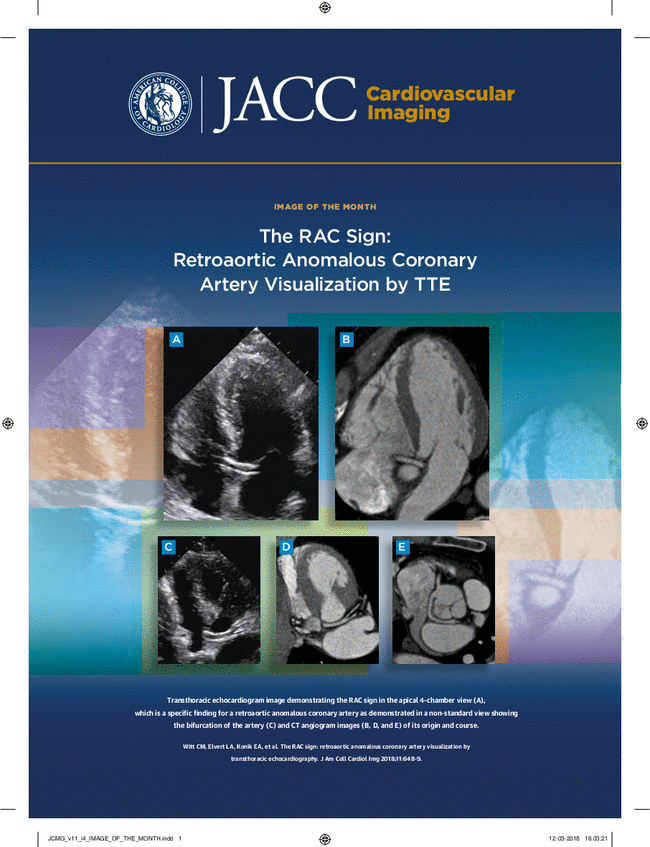Photon-Counting Computed Tomography in Cardiac Imaging.
IF 15.2
1区 医学
Q1 CARDIAC & CARDIOVASCULAR SYSTEMS
引用次数: 0
Abstract
Coronary computed tomography (CT) angiography plays a pivotal role in the diagnosis, risk stratification, and treatment of patients with known or suspected coronary artery disease. However, conventional CT technologies are limited by spatial resolution, artifact susceptibility, and radiation exposure. Photon-counting computed tomography (PCCT) introduces substantial technological improvements over conventional CT. This includes improved spatial and contrast resolution, energy discrimination, and reduction of various artifacts. As a result, PCCT enables superior coronary lumen and plaque evaluation, even in complex cases with severe calcification or smaller coronary stents. Beyond the coronary arteries, PCCT offers improved visualization of cardiac anatomy and myocardial tissue characterization with the potential to reduce downstream testing, improve diagnosis and treatment, and ultimately improve clinical outcomes. PCCT is poised to become the dominant technology for cardiovascular CT; however, challenges such as high costs, increased data demands, and a need for more validation, standardized image acquisition, and post-processing protocols remain. This review explores the technical principles of PCCT, its advantages over conventional CT, and its current and potential future applications in cardiac imaging, highlighting opportunities for future research.心脏成像中的光子计数计算机断层扫描。
冠状动脉CT血管造影在已知或疑似冠状动脉疾病患者的诊断、危险分层和治疗中起着关键作用。然而,传统的CT技术受到空间分辨率、伪影敏感性和辐射暴露的限制。光子计数计算机断层扫描(PCCT)引入了传统CT的实质性技术改进。这包括提高空间和对比度分辨率,能量辨别和减少各种伪影。因此,即使在严重钙化或冠脉支架较小的复杂病例中,PCCT也能更好地评估冠状动脉管腔和斑块。除了冠状动脉外,PCCT还提供了更好的心脏解剖和心肌组织特征的可视化,有可能减少下游检测,改善诊断和治疗,并最终改善临床结果。PCCT有望成为心血管CT的主导技术;然而,诸如高成本、增加的数据需求以及对更多验证、标准化图像采集和后处理协议的需求等挑战仍然存在。本文探讨了PCCT的技术原理,它相对于传统CT的优势,以及它在心脏成像中的当前和潜在的未来应用,强调了未来研究的机会。
本文章由计算机程序翻译,如有差异,请以英文原文为准。
求助全文
约1分钟内获得全文
求助全文
来源期刊

JACC. Cardiovascular imaging
CARDIAC & CARDIOVASCULAR SYSTEMS-RADIOLOGY, NUCLEAR MEDICINE & MEDICAL IMAGING
CiteScore
24.90
自引率
5.70%
发文量
330
审稿时长
4-8 weeks
期刊介绍:
JACC: Cardiovascular Imaging, part of the prestigious Journal of the American College of Cardiology (JACC) family, offers readers a comprehensive perspective on all aspects of cardiovascular imaging. This specialist journal covers original clinical research on both non-invasive and invasive imaging techniques, including echocardiography, CT, CMR, nuclear, optical imaging, and cine-angiography.
JACC. Cardiovascular imaging highlights advances in basic science and molecular imaging that are expected to significantly impact clinical practice in the next decade. This influence encompasses improvements in diagnostic performance, enhanced understanding of the pathogenetic basis of diseases, and advancements in therapy.
In addition to cutting-edge research,the content of JACC: Cardiovascular Imaging emphasizes practical aspects for the practicing cardiologist, including advocacy and practice management.The journal also features state-of-the-art reviews, ensuring a well-rounded and insightful resource for professionals in the field of cardiovascular imaging.
 求助内容:
求助内容: 应助结果提醒方式:
应助结果提醒方式:


